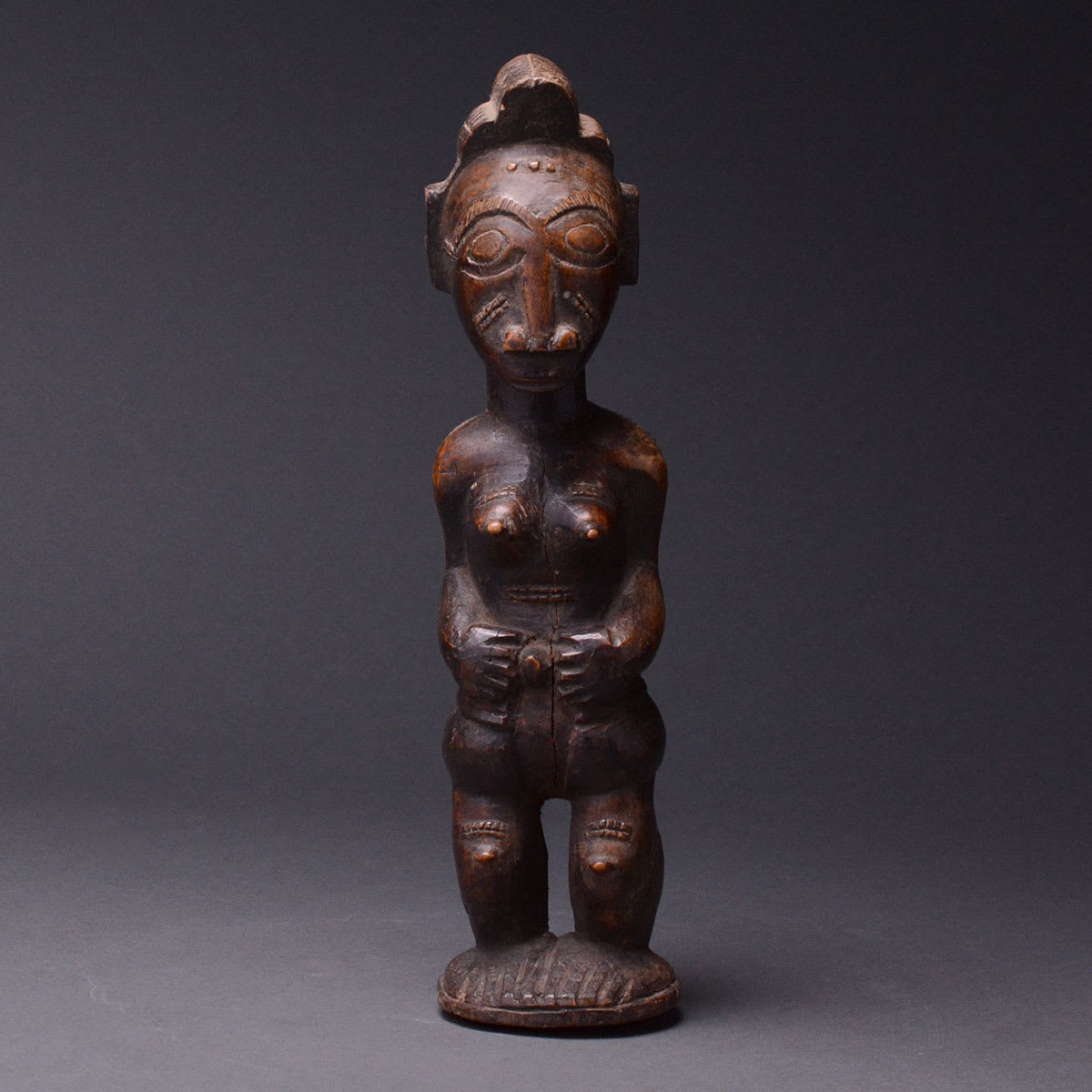Lagoons Region Sculpture of a Standing Woman, 20th Century CE
Wood
29.2 x 7.9 cm
11 1/2 x 3 1/8 in
11 1/2 x 3 1/8 in
PF.5908
Further images
This sculpture appears to be related to Baule works representing spouses from the spiritual world, called Blolo Bla (Blolo Blian if masculine). Baule people believed that every person has such...
This sculpture appears to be related to Baule works representing spouses from the spiritual world, called Blolo Bla (Blolo Blian if masculine). Baule people believed that every person has such a spouse. It manifests itself through a series of dreams, usually sexual in nature, and is believed to be responsible for practical and spiritual problems that arise in the life of that individual. Once carved under the direction of a village diviner, the statue is kept in the person’s room and is offered food.
She stands in a characteristic pose, resting both her hands on her belly next to the notable protruding navel. Her legs are spread apart with her knees slightly bent. Raised decorative scarification is prevalent, especially along her back, shoulders, and breasts, on the sides of her neck, and on her temples and forehead. These scars are marks of beauty that distinguish her rank in society. Her facial features, especially her arching brows that merge into a T-shaped nose, are also characteristic of the regional style. The figure wears an elaborate coiffure that has been braided into three central crests crowning her visage. Remnants of paint suggest that a painted cloth once hung around her waist, covering her sexuality. Although her genitals may be unelaborated, the sculpture has exaggerated her firm breasts and erect nipples in order to suggest the spiritual fertility of the work. This sculpture is a representation of the idealized form of spiritual femininity and beauty that reveals the cultural links between the Baule tribe and their Eastern neighbors.
She stands in a characteristic pose, resting both her hands on her belly next to the notable protruding navel. Her legs are spread apart with her knees slightly bent. Raised decorative scarification is prevalent, especially along her back, shoulders, and breasts, on the sides of her neck, and on her temples and forehead. These scars are marks of beauty that distinguish her rank in society. Her facial features, especially her arching brows that merge into a T-shaped nose, are also characteristic of the regional style. The figure wears an elaborate coiffure that has been braided into three central crests crowning her visage. Remnants of paint suggest that a painted cloth once hung around her waist, covering her sexuality. Although her genitals may be unelaborated, the sculpture has exaggerated her firm breasts and erect nipples in order to suggest the spiritual fertility of the work. This sculpture is a representation of the idealized form of spiritual femininity and beauty that reveals the cultural links between the Baule tribe and their Eastern neighbors.









